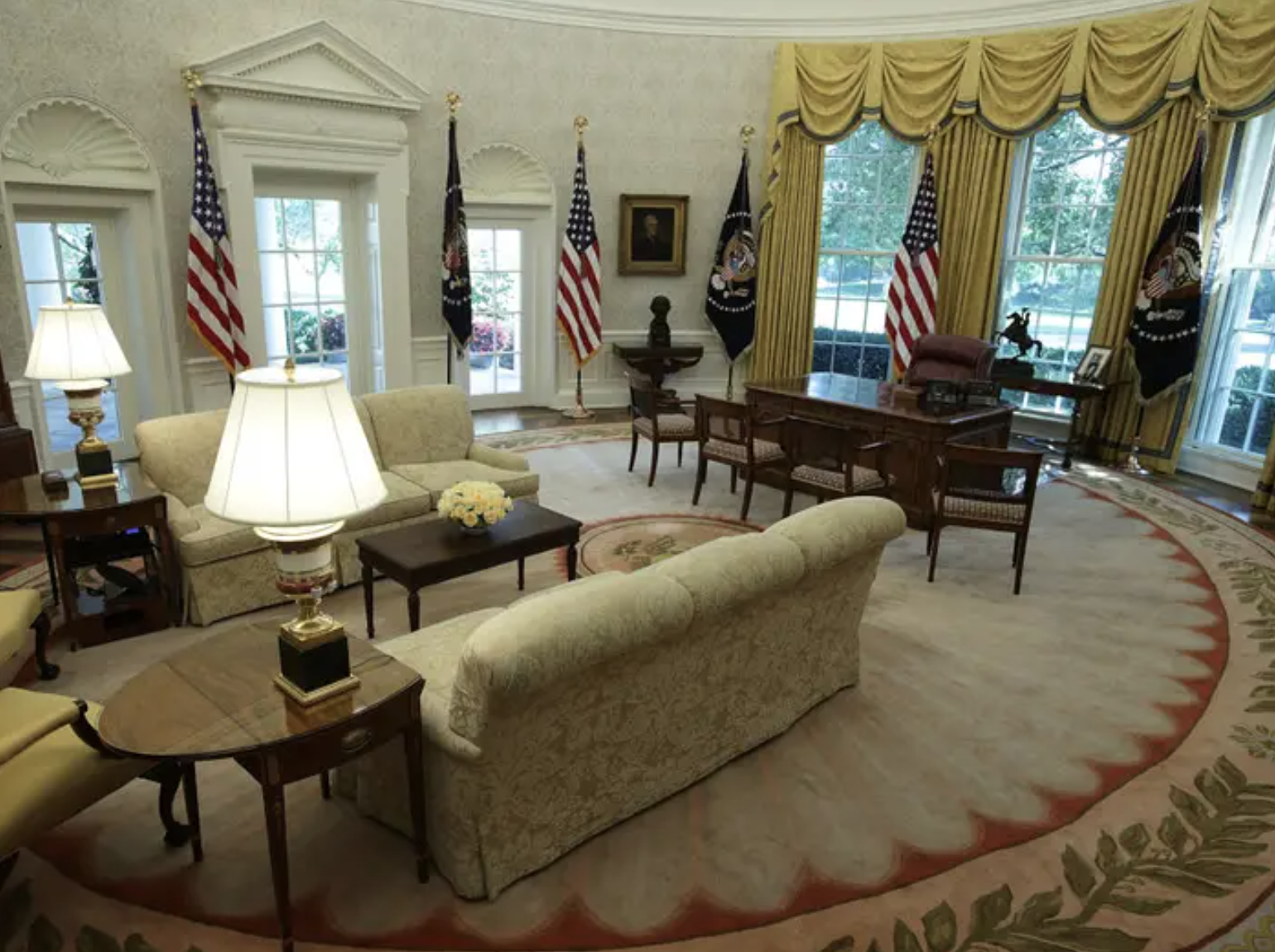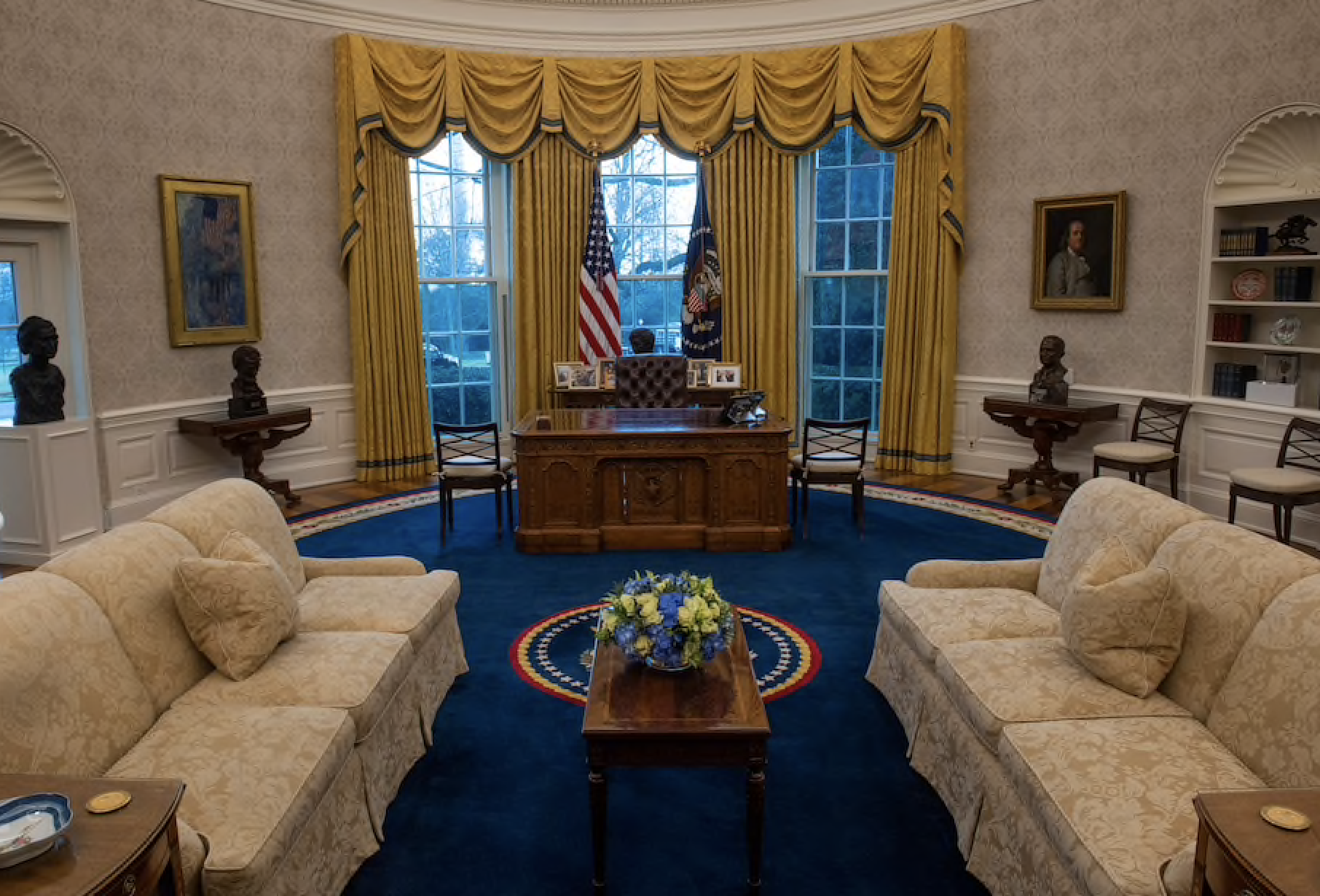
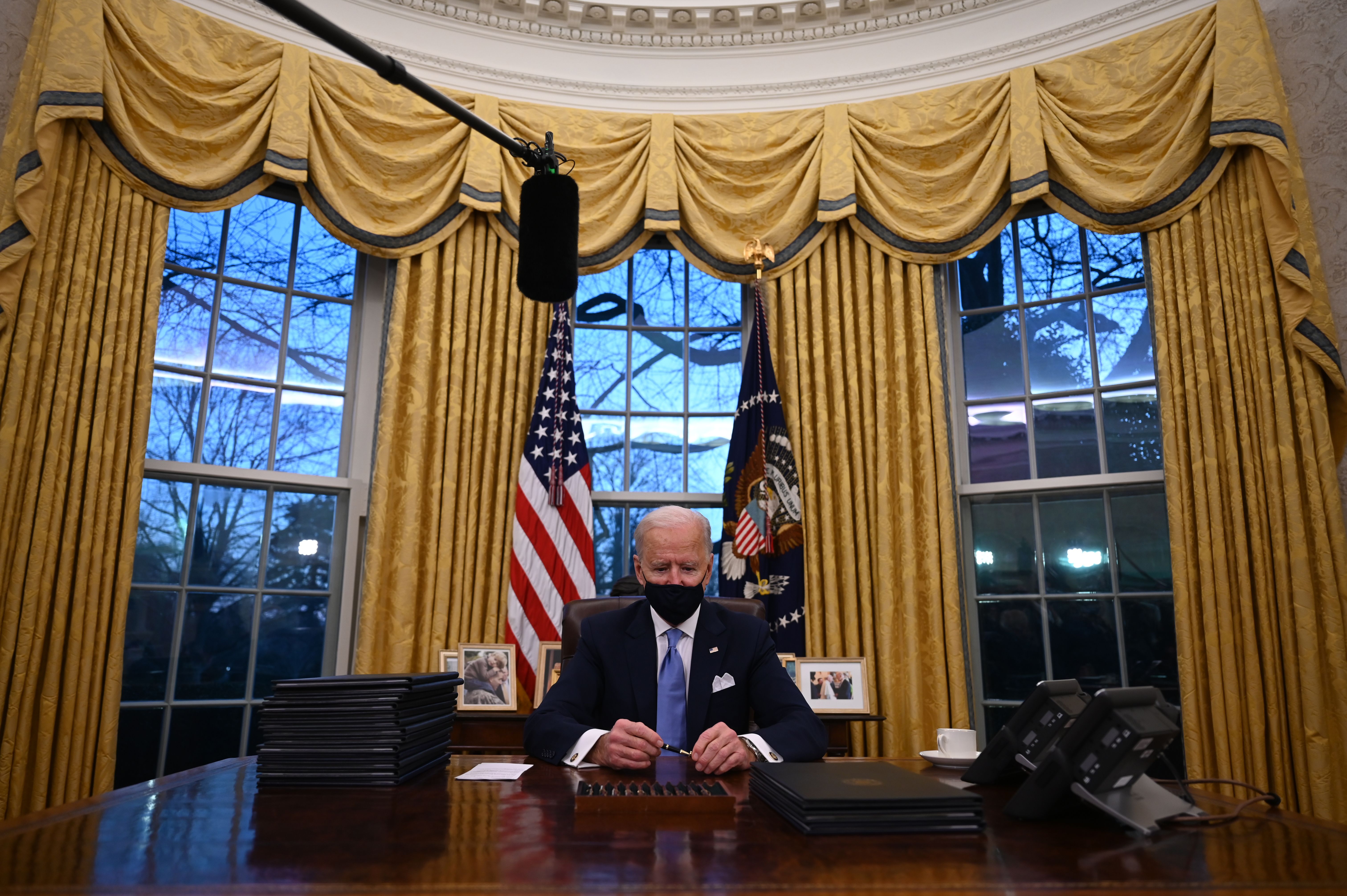
Washington D.C. (and all of America for that matter) has seen some major changes this week. On Wednesday, January 20, Joe Biden was officially sworn in as 46th President of the United States from the West Front of the U.S. Capitol, Kamala Harris become the first woman, first Black person and first South East Asian American Vice President of The United States, and Donald Trump’s tumultuous four years in power officially came to an end.
The turnover in the White House wasn’t just symbolic. In a matter of hours, the Oval Office underwent its own makeover to reflect the taste and values of the new Biden administration. One of the most noticeable changes was the removal of a portrait of Andrew Jackson. According to CNN, Trump drew criticism in 2017 after holding an event in the Oval Office honoring Navajo veterans while standing in front of the portrait of Jackson — the President who signed legislation that eventually led to the “Trail of Tears.” Instead, Biden replaced it with a portrait of Benjamin Franklin by Joseph Duplessis, perhaps a nod to his own interest and faith in science. The art piece is on loan from the Smithsonian Institution’s National Portrait Gallery.
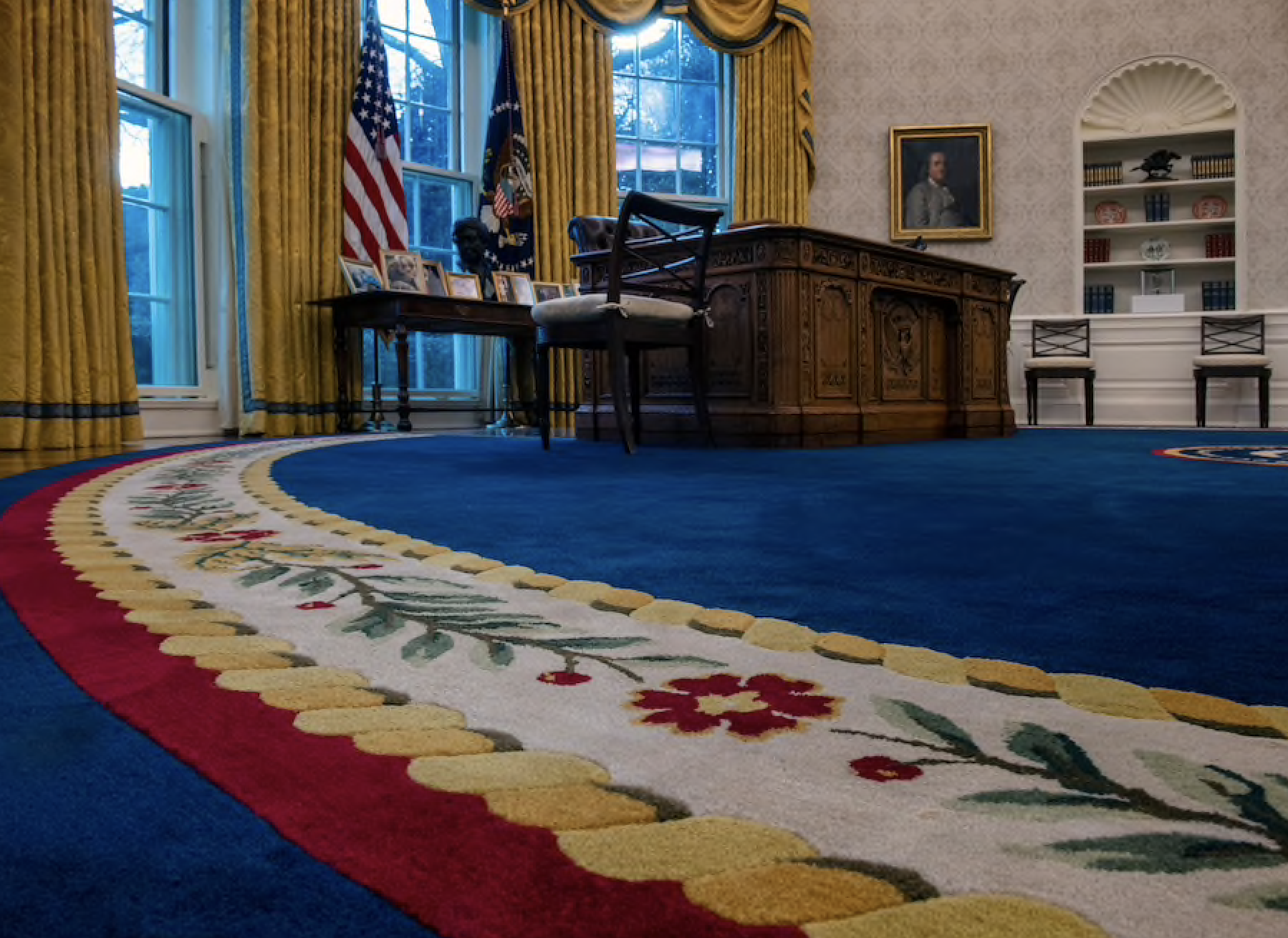
Another visually striking change is Biden’s choice of a deep blue rug, with the presidential seal in the middle, last used by President Bill Clinton, replacing the light colored rug laid down by Trump.
On the famed Resolute Desk (which is carried over from the last few administrations), gone is the button Trump reportedly used to summon staff members to bring him Diet Coke and in its place, a cup and saucer set, as well as a box of pens to sign orders. Biden, who signed 17 executive orders on his first day in office, also keeps a box of traditional pens on the desk, a stark contrast to the Sharpie-style markers, with his golden signature printed onto its barrel, that Trump favored.
Behind the desk, various photographs featuring members of the Biden family, including one of the president’s late son, Beau, are proudly displayed on the credenza, along with a bronze bust of Latino civil rights leader Cesar Chavez, created by artist Paul Suarez. Chavez is best known for his efforts to gain better working conditions for the thousands of workers who labored on farms for low wages and under severe conditions. The decor choice was clearly sending a message. Not only is the new director of White House Office of Intergovernmental Affairs, Julie Chavez Rodriguez, the labor leader’s granddaughter, but Biden has boldly proposed progressive immigration legislation that would allow undocumented farm workers to qualify to apply for green cards immediately.
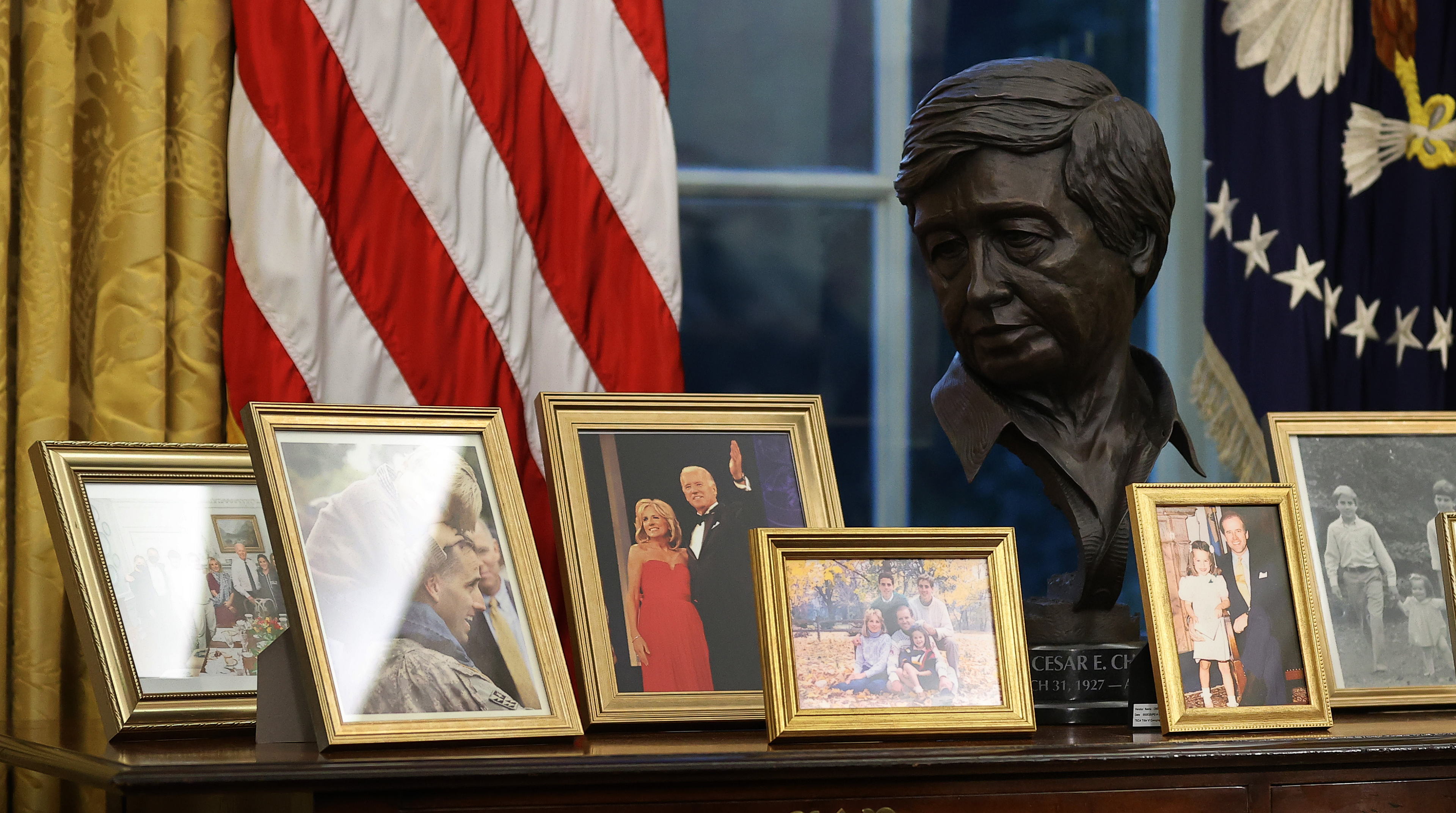
Other new busts brought into the Oval Office include those of Rev. Martin Luther King Jr., Robert F. Kennedy, Rosa Parks, Eleanor Roosevelt, and Daniel Webster, a former senator who defended the Union.
One bust no longer there is the one Trump had displayed of Winston Churchill, the respected British leader with whom former President Franklin Delano Roosevelt worked closely during World War II. Immediately, British tabloids have deemed it a snub to the country, CNN reports. When Obama also chose not to display it during his presidency, he was met with harsh and even racist criticism. Texas Republican Senator Ted Cruz claimed the decoration decision “foreshadowed everything that was to come the next six years.” Boris Johnson, who was then mayor of London and is now prime minister, blamed the swap on the “part-Kenyan President’s ancestral dislike of the British empire.”
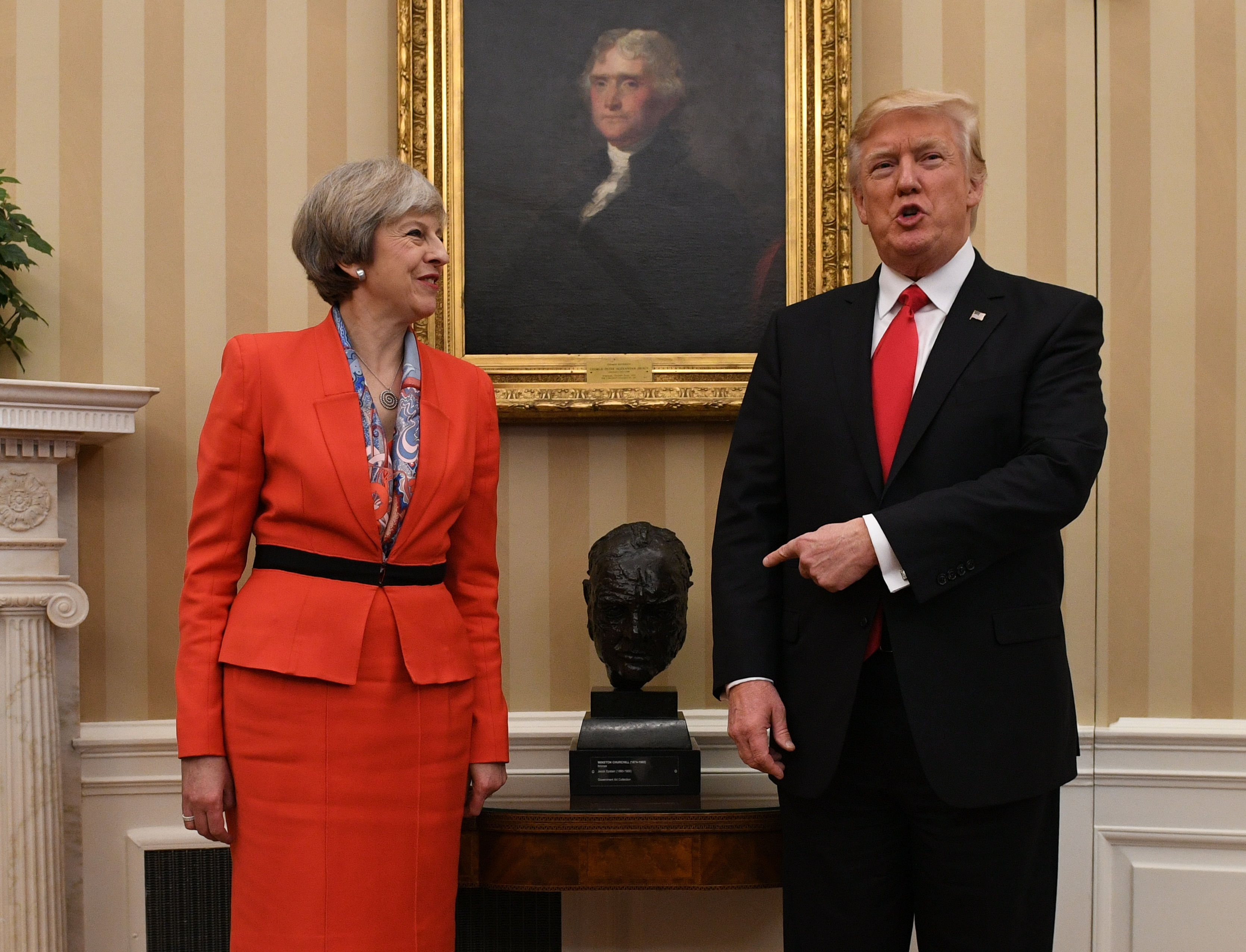
However, this time around, British officials are squashing the drama.
“It’s of course up to the President to decorate the Oval Office as he wishes,” a British government spokesperson said in a statement emailed to reporters, according to the Washington Post. “We’re in no doubt about the importance President Biden places on the UK-US relationship.”
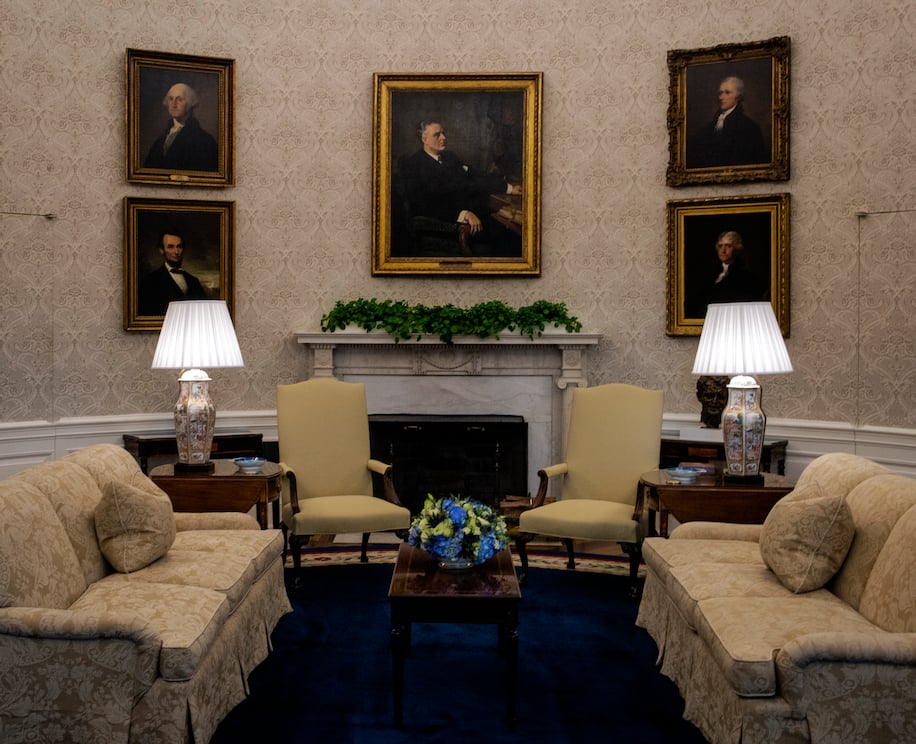
Speaking to Biden’s desire for more bipartisanship, The Post reports other parts of the office now feature paintings of George Washington, Abraham Lincoln, Franklin D. Roosevelt and, placed together, Thomas Jefferson and former treasury secretary Alexander Hamilton — two men who famously disagreed with one another. Biden’s office said the paintings were twinned as “hallmarks of how differences of opinion, expressed within the guardrails of the Republic, are essential to democracy.”
Other changes in the Oval Office include the removal of Trump’s Challenge Coin collection, the return of the 1917 oil painting “Avenue in the Rain,” the removal of flags of the U.S. military branches, and the replacement of Trump’s thick, reddish brown executive desk seat with a tufted, dark brown leather chair.
